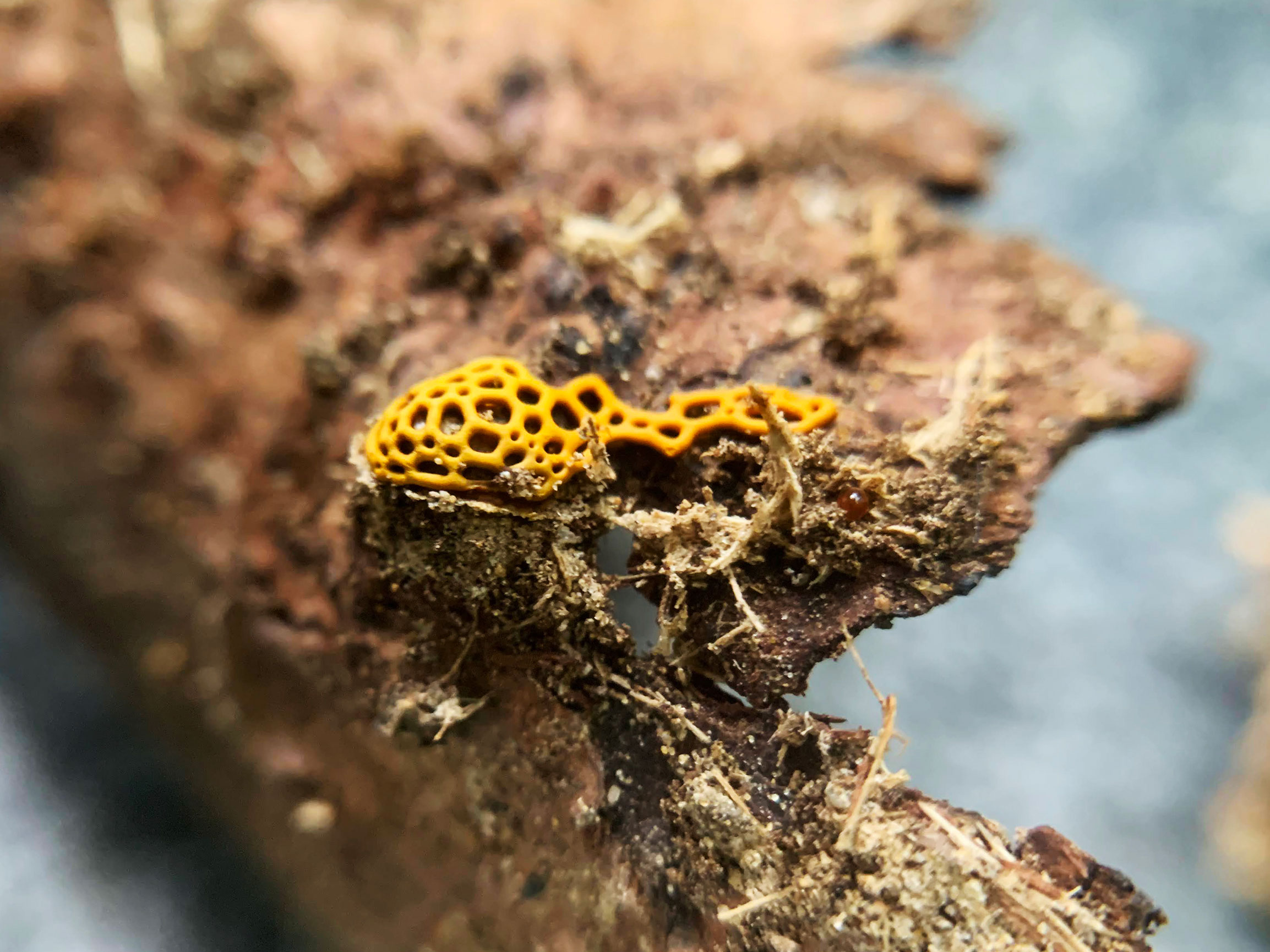Melmel CHEN

Slime Molds, Ooze and the Primordial
- 2022, mix media installation
- Dimensions variable
- Courtesy of the artist.
Curatorial Perspective
Throughout the human history, there have been innumerous mysteries of life, which weave together a web of imagination, ethics, and technical knowledge since time immemorial. In life sciences, since the early modern period, slime molds have played a similarly mysterious role. As protista, slime molds have defied scientific classification even until today. In the plasmodium state, slime molds exist collectively as social amoebas; and in laboratories, slime molds – as if they were capable of thinking – can even find hidden food within the shortest distance in an artificial maze. From the perspective of knowledge evolution, this work demonstrates potential and multiple connections between the human race and other species, including the possibilities of learning, memory, and perception, while constructing a cosmic “collective fate”—a future faced by human and non-human together. Like other forms of politics, cosmopolitics denotes interactions and negotiations among species, and involves dimensions of both the living and the non-living. “Modern” slime molds consequently constitute an apt fable: As Western modernity distinguishes metaphysically the living and the non-living, the conscious and the unconscious, while utilizing the institution of modernity to perform disenchantment of our lifeworld, perhaps slime molds and the myriads of imaginations and worldviews revolving around them (if imparting general scientific knowledge could be viewed as a way of constructing worldviews) could also be conceptualized as one of the cosmopolitical forms characterizing the place and time inhabited by us all.
Creation Description
In 1868, English biologist Thomas Henry Huxley named a substance that he believed to be a form of primordial matter Bathybius haeckelii. Huxley once said that, “Protoplasm, simple or nucleated, is the formal basis of all life. It is the clay of the potter: which, bake it and paint it as he will, remains clay, separated by artifice, and not by nature from the commonest brick or sun-dried clod. Thus, it becomes clear that all living powers are cognate, and that all living forms are fundamentally of one character.”
In 2019, Melmel Chen came across the peculiar species “slime mold 1.” She then made several visits to the ecological pond on the Gongguan Campus of National Taiwan Normal University, Yangmingshan, and Daxueshan to collect plasmodial slime mold, which she grew on homemade agar jelly substrates and fed with oat flakes. Once slime mold grows into plasmodia, within 20 minutes it starts to effectively carry out network-like colony-based competition, as if possessing the wisdom to calculate the most beneficial foraging path. Chen is fascinated by this tiny, beautiful, and mysterious substance. Therefore, this work explores the origins of life and the universe beginning with slime mold.

